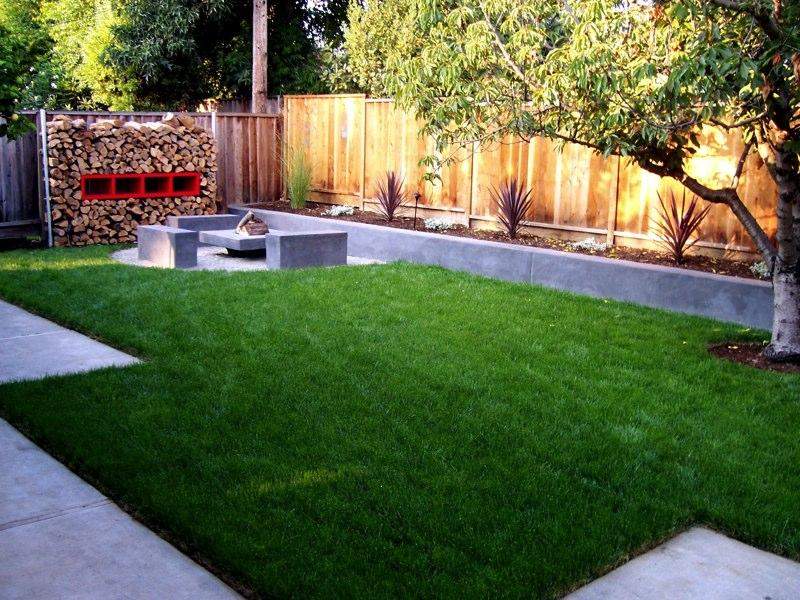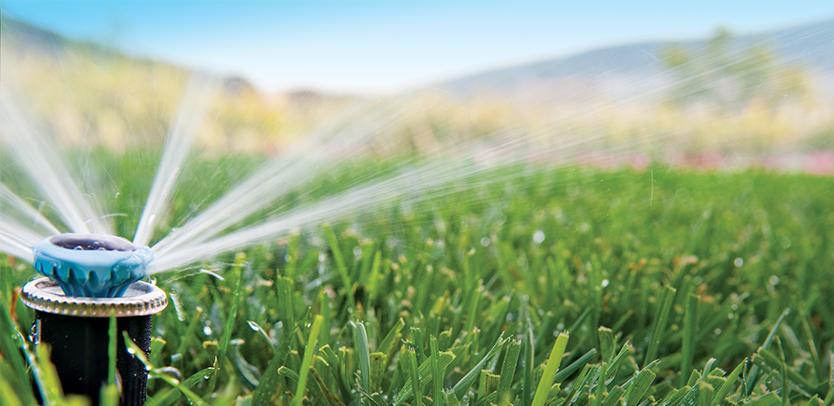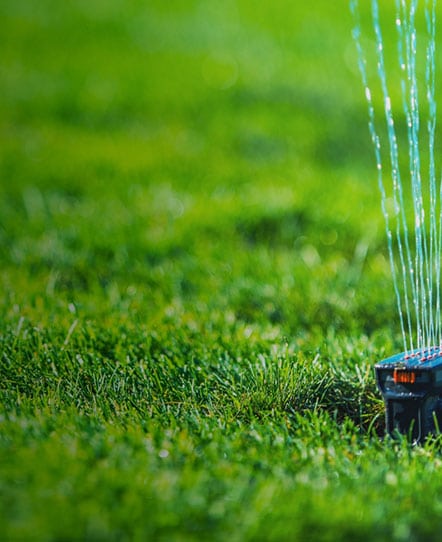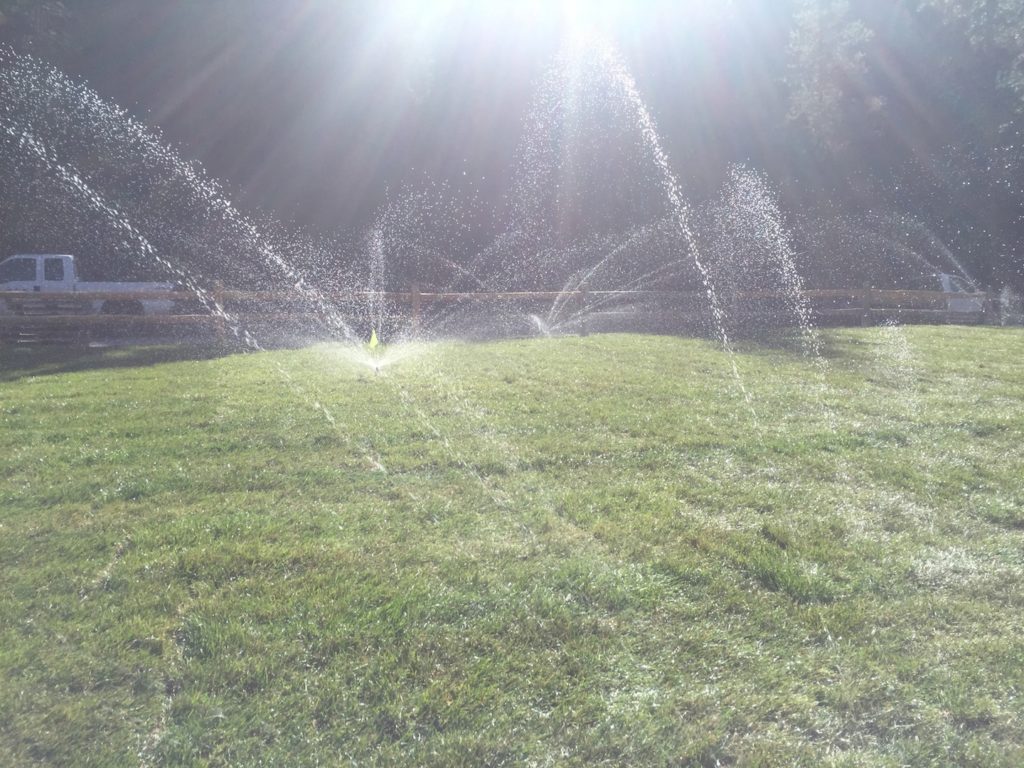Sprinklers are a necessity in Missoula.
Ok, necessity is probably taking it a little far, but if you live in Missoula and you want your landscape to thrive, you need water. How you deliver it is up to you, but if you’ve spent any amount of time dragging hoses around (I do until my sprinklers go in this spring!), you’d probably agree that a sprinkler system is perhaps the best money you’ll spend in your landscape. What you might not know is that sprinklers are also the most efficient way to irrigate your landscape plants. I’m using sprinklers here as a generic term for any form of automatic irrigation system, whether we’re using a standard pop up spray or rotor head, or a point-source form of irrigation such as a drip line. And I’m stressing efficiency for a number of reasons:
- Water is a topic that’s near and dear to my heart. We’ve all heard by now that it’s “the next oil”, particularly as it becomes more scarce. It’s also super important in the Western US. As responsible citizens of Missoula and the Earth, I believe it’s our job to be good stewards of our water supply, and not take more than we really need. As a sprinkler system installer, it’s my job to design or retrofit systems to be as efficient as possible.
- We are in a drought. A bad drought. In fact, right now in 2016, our drought is as bad as Northern California’s. Remember when Lolo Creek dried up last summer?
- As irrigaters, we tend to over-water….a lot. What’s a plant look like when it’s thirsty? Droopy and yellowing, right? How about when it’s over-watered? Droopy and yellowing, right? What’s our first reaction when plants look stressed? Water it! Exactly…
- Efficient systems save you money!
There’s probably a laundry list of other reasons, but you get the idea. We use too much water keeping our lawns green. The EPA estimates that the average household wastes as much as 50% of the water used outdoors (i.e. sprinklers) due to inefficient watering methods. The good news is that the sprinkler manufacturers and the larger industry as a whole is starting to recognize issues like ours in Missoula, and they are starting to do something about it! A combination of new products that help save water and educating installers like myself can go along way towards saving you, the consumer and end user, a lot of water and a lot of money. Let’s see how this works.
Sprinklers (and sprinkler system components) that save water.
Before we delve into the specifics, it’s important to understand the goal we are trying to achieve with a sprinkler system. Optimal efficiency means that we are evenly wetting the root zone of our turf and ornamental landscape plants. Not the top half of it, and not 6 inches below it, but only the root zone. Basically, this is the upper 6-8″ of soil. Many factors such as head spacing, water pressure, run time, weather, and others influence how efficient your system is. An efficient sprinkler system will match the evapotranspiration (ET) rate of your landscape. OK, now that we understand what we’re trying to do, let’s look at some hardware that will help us get there.
Irrigation controllers:
Though a number of things influence the efficiency of a sprinkler system, but probably the best place to start is with the controller (some people call it the clock). The job of the controller is to send a signal to a solenoid on valve of a particular sprinkler zone and tell it to open by way of a small current and an electromagnet. Basically, it’s on on-off switch that keeps track of time. To make an efficient system, you don’t want to run you sprinklers too long and waste water by soaking more than the root zone. Alternatively, you don’t want to run them for too short a time period either, as you’ll likely end up with a weak or dead lawn.
Controllers have gotten quite complex over the years as more and more features have been added, and they are much more like small computers now than clocks. In recent years, “smart” controllers have hit the market that work quite well in terms of saving water and money. These smart controllers receive incoming weather information, either from a network connection or a weather station, and calculate the ET onsite to determine appropriate run times for each zone. The nice thing about these smart controllers is that it adjusts run times without human input – it’s similar to the seasonal adjust feature on dumb controllers, but you don’t have to remember to input the information as the homeowner or professional. The graphic below shows what Hunter Industries uses to measure weather conditions on site and adjust irrigation run time accordingly.

Sprinklers:
My favorites are two rotary nozzle designs, again from Hunter and Rainbird. The Hunter MP Rotator (MPR) is a favorite of mine that I’ve been using for several years now. It’s easy to adjust and is touted as having roughly a 30% water savings over conventional rotors. They do this by lowering the precipitation rate, which reduces run off and loss to evaporation. You do have to run them longer than a standard rotor, but you lose less overall.

Rainbird has a similar offering called the R-VAN, which stands for Rotary Variable Arc Nozzle. It offers similar benefits as the MPR, but you don’t need a tool to adjust it. It also looks really cool while it’s running. In my experience, it is a bit more of water hog, so you need to make sure to adjust your run time accordingly. Either of these nozzles will fit a standard spray body, so it’s pretty easy to retrofit an existing system.
Both companies also offer high efficiency spray nozzles, which can be a better choice for smaller areas (typically 15′ radius or less – think boulevards, side yards, etc.)
Pressure optimization for sprinklers.
Unless you optimize your water pressure for a particular head type, you might as well kiss your savings goodbye. According the the guys who test this stuff (manufacturers like Rainbird or Hunter), every 10 psi drop uses 6-8% less water. And, they engineer their heads and nozzles to perform optimally at specific pressures. Spray nozzles like 30 psi, rotors and rotary nozzles like 40 psi – 70 psi, and drip irrigation likes 30 psi or less. Rather than try to explain it, I’ll direct you to a great tool that Hunter has built – their Water Savings Calculator. If you take the time to input the information for your specific system, you’ll see how much water (and money!) can actually be saved. Let’s just say its generally hundreds or thousands of dollars and tens to hundreds of thousands of gallons of water per year you’ll save by installing the right stuff.
The right stuff is pressure regulators, either at the valves or the heads. You have the option to buy heads with pressure regulators in them – they don’t cost much more and will easily pay for themselves in water savings. It’s a no-brainer. You can also regulate the pressure at the zone level by installing a pressure regulator at the valve. This is easy for a new system, but depending on the age of an existing system, it may not always be possible without replacing the valves, and may or may not make sense versus just upgrading the heads. Call me or email me if you want help figuring this out.
Drip irrigation
Another great way to save money is by using drip irrigation. Also known as point-source irrigation, this method of irrigating delivers water directly to the root zone of a plant instead of overhead watering. No only does this save water due to evaporation, but it also gives you the ability to specify how much water a certain plant gets through the use of emitters. For example, in your average full sun garden, you might have some Karl Foerster grasses, some barberry, some cone flower, and some lavender. Rather than watering from overhead, and thus giving each plant the same amount of water, you can decide “OK, this barberry will need the most water, so I’ll give it a 2.0 gallon per hour emitter. The grass and the cone flower need some water to flourish, but not as much as the barberry, so they’ll each get a 1.0 gph emitter. And our lavender, it thrives off of low water conditions, so it’ll get a 0.5 gph emitter.”

When you set the time on a drip system, it’s helpful to think of it in terms of gallons per hour. If you have a 2.0 gph emitter on your barberry, you wouldn’t necessarily run it for a hour, just like you probably wouldn’t dump 2 gallons on it each day you decide to water it. Instead, you’d probably set your system for 20-30 minutes, or .67 – 1.0 gallons of water per irrigation cycle.
Subsurface drip irrigation is another form of water efficient irrigation, though it’s one I don’t have a ton of experience with. The idea is that you run pre-emitted tubing 4″-6″ below the surface of your lawn or garden bed, and by spacing the tubing correctly (typically about 12″ apart), you’ll get a nice even wetting pattern across the irrigated area. It’s supposed to be over 90% efficient. Check out this video about it:
When this stuff first started showing up a few years ago, people were having troubles with it such as uneven watering, clogging emitters, and so on. I imagine it would be a big pain in the butt to repair, and forget about being able to aerate your lawn with this stuff. However, I know the manufacturers have been trying to correct the problems people are reporting, such as with roots clogging the emitters, and I think it’s come a long ways. Perhaps there’s hope for it, an 90% efficiency is GREAT! A typically overhead system is closer to 50% efficiency, for comparison, so the potential watering savings are there.
Drain check valves in sprinklers.
Another tool you or your installer can use to help save some water is to install a sprinkler with check valve at the lowest head location on a given zone. Ever noticed how the water in a zone runs out of the lowest head after the zone is turned off? It probably isn’t a whole lot – just a few gallons each time, but if you lose 10 gallons each cycle, and you’re watering 120 days per year, that’s 1200 gallons of water that really didn’t need to go down. Per leaking zone. Some of my clients have 20 or more zones on their property. That’s 24,000 gallons of water. A $5 head can easily fix that issue.
Have an irrigation audit done.
Hiring an certified irrigation auditor is a great way to identify shortcomings in your system and learn about ways you can make your system more efficient. An audit largely consists of measuring how evenly your system applies water, known as the distribution uniformity (DU), to the area being irrigated. In an ideal world, it’s applied with 100% DU, though that’s never really the case. Head spacing, wind, water pressure, terrain, mowing practices, maintenance of the system, and other factors can all affect DU. You can measure it yourself and get a good idea of how your DU looks with a bunch of paper or plastic cups. Set them out in a grid pattern throughout your yard, spaced every 15′ or so, then turn on the sprinklers and let them run for a few minutes. You’ll be able to see what areas are getting more water and what areas are getting less water. With some trial and error, you could change nozzles, zone run times, and even head locations to try and smooth out your DU if its not great to start with. DU is important because you’ll need to water up to the point that the areas with the lowest coverage are getting the water they need, meaning the rest of the irrigated areas are probably receiving too much water.

So, a recap. Here’s your steps to save water and money this summer:
- Get a hold of me and let’s look at your system in detail. Or, if you’re comfortable with it, look at it yourself. Figure out what type of controller you have. Can it be retrofitted with a weather station, thus making it “smart”? What kinds of valves do I have have? What kinds of heads?
- Decide where you can invest in your system to save you money. Or, if it’s a new system, ask me or your installer what we’re doing to ensure you’re not wasting water. Are pressure regulation devices going in? How about drain check valves? Low precipitation rate heads?
- Make your your system is tuned up and adjusted properly. Tuned up means making sure you don’t have broken heads, dirty valves, etc. Adjusted properly means we’re not overspraying on hardscape surfaces, the neighbors lawn, or across any sidewalks.
- Audit your system for the best possible distribution uniformity.
Happy watering this season Missoula! Enjoy those sprinklers, but remember these tips and save some water!

